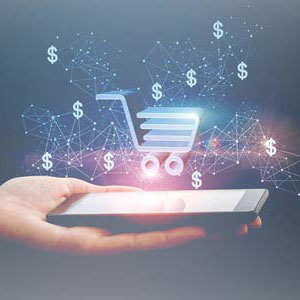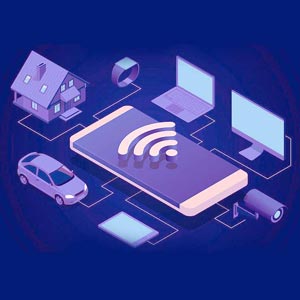THANK YOU FOR SUBSCRIBING

The Link Between Omnipresent and Consumer Expectations
Ruben Martin, Co-Founder and CEO, Quivers


Ruben Martin, Co-Founder and CEO, Quivers
The purchasing decision can happen on the brand’s site, on a third party partner site, or from an advertisement seen on social media. No matter the channel, it is important to remember to have an omnipresent strategy in order to create revenue generating opportunities.
Within the last five years, there have been tremendous advancements to help brands go beyond simply connecting channels together. Brands that are making headway among the competition are utilizing innovative technology to leverage their product’s relationship with the consumer, to create an omnipresent shopping experience.
Several Companies have taken Omnipresence to the Next Level:
Albertsons Online Grocery Marketplace:
In October 2018, grocery retailer Albertsons launched an online marketplace with over 40,000 food, wellness and household products. The plan is to eventually offer consumers more than 100,000 products.
The goal of the marketplace is to create an infinite aisle experience for customers to buy direct from the manufacturers of their choice and have the item shipped to their home. Albertsons is focused on vendors who offer natural, organic, ethnic and alternative products. The environment is set to allow vendors to list products available for purchase and offer consumers the ability to interact with familiar front-end e-Commerce functions such as advanced searches, product descriptions, and easy ordering. This new way of selling groceries will be used as a means to understand purchasing data, in order to better serve and understand consumers.
Albertsons’ e-Commerce is powered by Instacart, a service enabling the grocer to offer same-day in-store pickup and same-day ship-to-home for orders purchased locally.
Nordstrom’s Consumer Intel to Merchandise:
In 2018, Nordstrom utilized its online consumer purchasing behavior intel to gather consumer data to help determine the merchandising within storefronts and online. Realizing that the majority of Nordstrom consumers are on their smartphone, the company created a way to customize product offerings based on the lifestyle of their shoppers.
The goal of the marketplace is to create an infinite aisle experience for customers to buy direct from the manufacturers of their choice and have the item shipped to their home.
Nordstrom plans to roll out an app that allows for consumers to easily scan through social media on their phone and save on the app. While in the app, Nordstrom will offer a personal virtual stylist, who will gather the information and create digital style boards featuring a variety of customized looks based on the consumer’s desired needs. If the consumer likes the items chosen by Nordstrom, he or she can mark directly in the app the items to try on in-store. Nordstrom then is able to route the consumer to the nearest stocking store and offer a specialized fitting room containing the items they desire readily available. Inside the fitting room, consumers can interact with a tablet readily for replacement of items or for purchasing direct via mobile pay.
Kroger’s Digital Price Tags:
By the end of 2018, Kroger plans to launch nearly 200 stores with a digital price tag forgoing the once familiar tangible tag. This digital tag, known as EDGE, Enhanced Display for Grocery Environment, is connected by Internet-of-Things (IoT) sensors, beaming real-time information from every aisle and end-cap. Kroger EDGE will have nutritional information and will highlight items that match a consumer’s dietary restrictions.
To take Kroger’s EDGE one step further, the company launched a service described as Scan, Bag, Go. This technology will cut down wait time in-half by allowing shoppers to scan their items as they shop throughout the store. Shoppers can now easily browse and purchase items successfully at the speed at which they choose to move at without a wait time.
The company’s overall goal is to communicate with shoppers as they quickly locate desired products for purchase within seconds of finding desired items.
Zara’s Augmented Reality Shopping Experience:
At the beginning of 2018, Zara announced that the company plans to incorporate augmented reality within its storefronts by bringing their clothing to life within a shopping app.
To give consumers a closer view of the merchandise, Zara will allow consumers in-store to point the app’s featured camera at mannequin for a mobile view of the clothing brought to life. Consumers are able to place their orders on the app for ship-to-home, or checkout while in-store. The technology aides consumers to efficiently purchase items, while eliminating the process of having an in-store representative find items by barcode.
Solutions that enable a seamless omnipresent experience, are evolving the way brands understand, track, and manage consumer purchasing habits, to ensure products are being received within a timely manner.
When a brand unifies all channels to provide an omnipresent shopping environment, it creates a long-lasting consumer relationship. By continuing to appeal to the needs of the consumer, brands can further connect and thrive in today’s competitive market.
Weekly Brief
I agree We use cookies on this website to enhance your user experience. By clicking any link on this page you are giving your consent for us to set cookies. More info
Read Also













